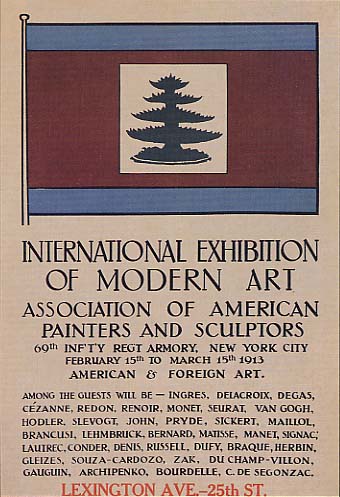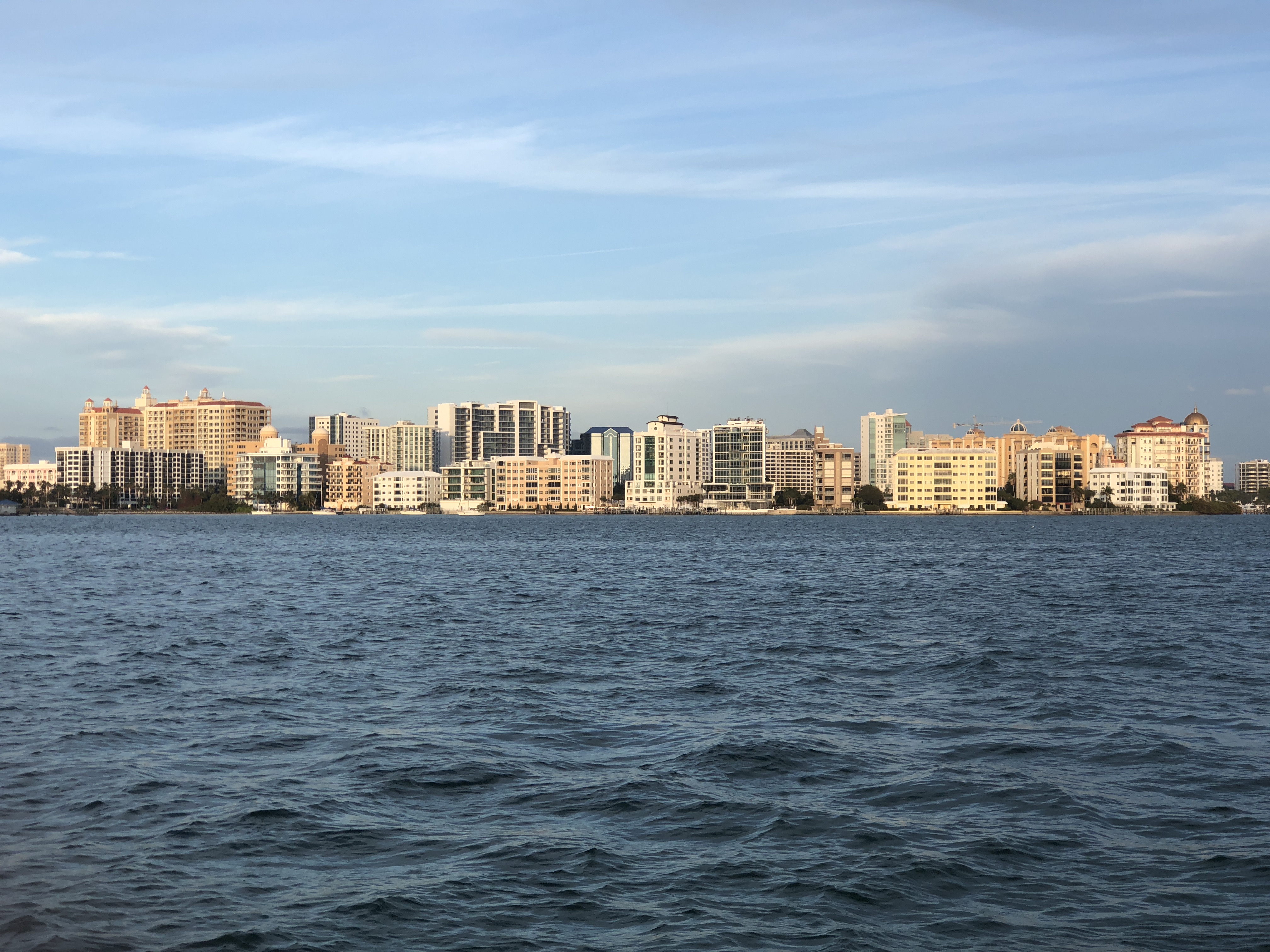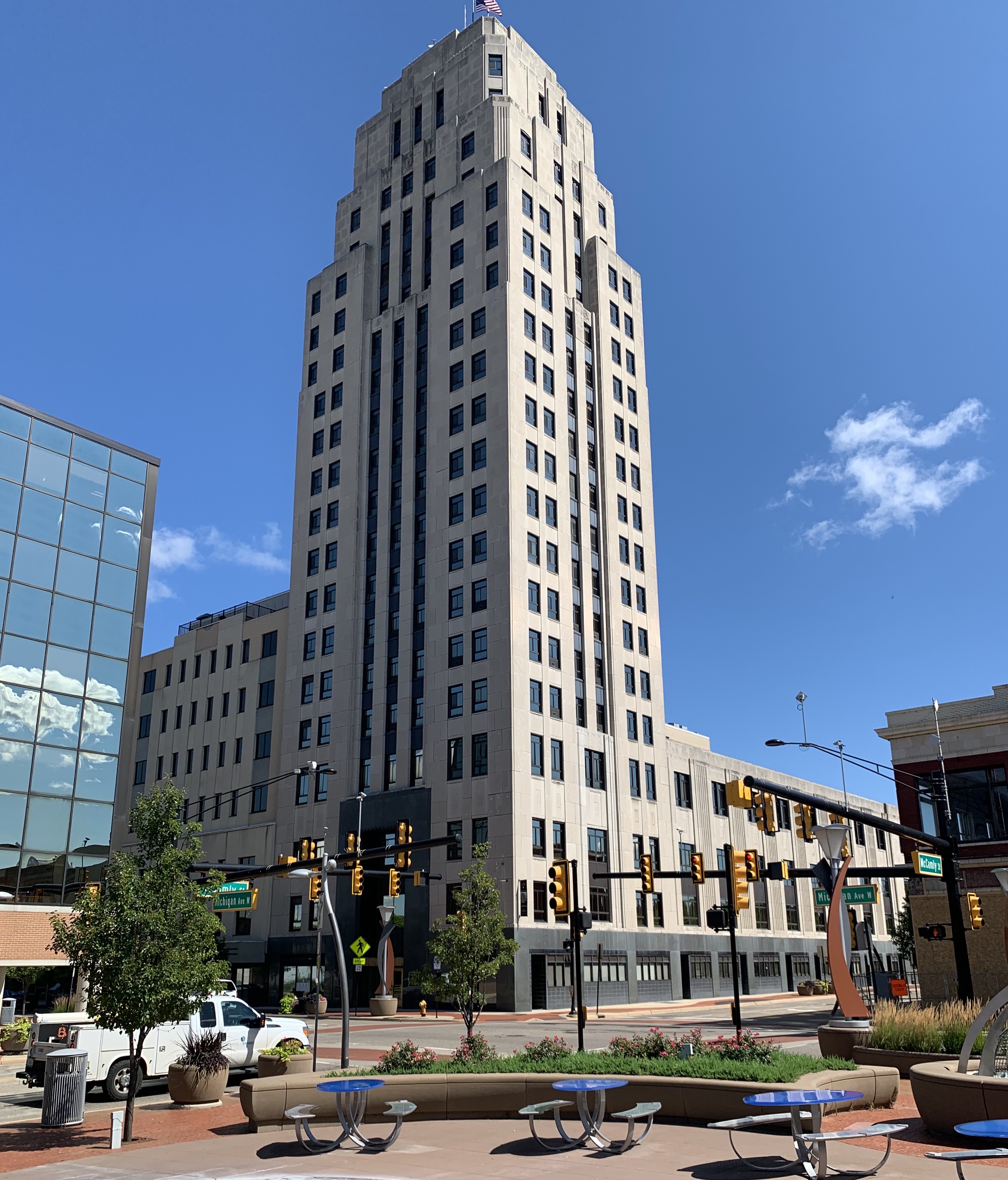|
Manierre Dawson
Manierre Dawson (December 22, 1887- August 15, 1969) was an abstract American painter and sculptor. Personal life Dawson was born and raised in Chicago, Illinois, but lived most of his life in Michigan. He was the second of four sons born to George E. Dawson and Eva (Manierre) Dawson who, despite supporting art as an avocation, preferred "professional" careers for their sons. His younger brother, Mitchell Dawson, was an attorney and poet. Early career After completing high school, Manierre enrolled in the civil engineering program at the Armour Institute of Technology. When he completed his four-year degree in 1909, his civil engineering curriculum had made a lasting impact on his creative vision. Mechanical drawing methods and descriptive geometry courses led him to paint in a geometric style by the end of 1908. His analytic geometry and differential calculus courses contributed directly to his first series of abstract paintings in the spring of 1910. (Ploog, Bairstow ... [...More Info...] [...Related Items...] OR: [Wikipedia] [Google] [Baidu] |
Armory Show
The 1913 Armory Show, also known as the International Exhibition of Modern Art, was a show organized by the Association of American Painters and Sculptors in 1913. It was the first large exhibition of modern art in America, as well as one of the many exhibitions that have been held in the vast spaces of U.S. National Guard armories. The three-city exhibition started in New York City's 69th Regiment Armory, on Lexington Avenue between 25th and 26th Streets, from February 17 until March 15, 1913. The exhibition went on to the Art Institute of Chicago and then to The Copley Society of Art in Boston,International Exhibition of Modern Art catalogue cover, Copley Society of Boston, |
Norton Museum Of Art
The Norton Museum of Art is an art museum located in West Palm Beach, Florida. Its collection includes over 8,200 works, with a concentration in European, American, and Chinese art as well as in contemporary art and photography. In 2003, it overtook the John and Mable Ringling Museum of Art, in Sarasota, and became the largest museum in Florida. History The Norton Museum of Art was founded in 1941 by Ralph Hubbard Norton (1875–1953) and his first wife, Elizabeth Calhoun Norton (1881–1947). Norton, the former head of the Chicago-based Acme Steel Co., moved to West Palm Beach upon retirement and decided to share his sizable collection of paintings and sculpture. The late Art Deco/ Neoclassical building designed by Marion Sims Wyeth opened its doors to the public on February 8, 1941. Its mission statement is "to preserve for the future the beautiful things of the past." Under the leadership of its director Hope Alswang from 2010 until 2019, the Norton Museum of Art raised $100 ... [...More Info...] [...Related Items...] OR: [Wikipedia] [Google] [Baidu] |
Grand Rapids Art Museum
The Grand Rapids Art Museum (GRAM) is an art museum located in Grand Rapids, Michigan, United States, with collections ranging from Renaissance to Modern Art and special collections on 19th and 20th-century European and American art. Its holdings include notable modern art works such as Richard Diebenkorn’s 1963 ''Ingleside''. The museum has in its collection 5,000 works of art, including over 3,500 prints, drawings and photographs. History The museum was founded in 1910 under the name Grand Rapids Art Gallery, which was soon altered to its present name. Initially based in a former residence at 230 Fulton Street, it moved to the historic Federal Building on Pearl Street in 1981. In 2004, construction began on a new green museum building, which was to be LEED certified. The building, which features of gallery and exhibition space, has been certified LEED Gold. London-based Munkenbeck+Marshall Architects was appointed architect for the new building in 2002 and developed the ... [...More Info...] [...Related Items...] OR: [Wikipedia] [Google] [Baidu] |
Sarasota
Sarasota () is a city in Sarasota County on the Gulf Coast of the U.S. state of Florida. The area is renowned for its cultural and environmental amenities, beaches, resorts, and the Sarasota School of Architecture. The city is located in the southern end of the Greater Tampa Bay Area and north of Fort Myers and Punta Gorda. Its official limits include Sarasota Bay and several barrier islands between the bay and the Gulf of Mexico. Sarasota is a principal city of the Sarasota metropolitan area, and is the seat of Sarasota County. According to the 2020 U.S. census, Sarasota had a population of 54,842. The Sarasota city limits contain several keys, including Lido Key, St. Armands Key, Otter Key, Casey Key, Coon Key, Bird Key, and portions of Siesta Key. Longboat Key is the largest key separating the bay from the gulf, but it was evenly divided by the new county line of 1921. The portion of the key that parallels the Sarasota city boundary that extends to that new county line alon ... [...More Info...] [...Related Items...] OR: [Wikipedia] [Google] [Baidu] |
Portland Cement
Portland cement is the most common type of cement in general use around the world as a basic ingredient of concrete, mortar, stucco, and non-specialty grout. It was developed from other types of hydraulic lime in England in the early 19th century by Joseph Aspdin, and is usually made from limestone. It is a fine powder, produced by heating limestone and clay minerals in a kiln to form clinker, grinding the clinker, and adding 2 to 3 percent of gypsum. Several types of portland cement are available. The most common, called ordinary portland cement (OPC), is grey, but white Portland cement is also available. Its name is derived from its resemblance to Portland stone which was quarried on the Isle of Portland in Dorset, England. It was named by Joseph Aspdin who obtained a patent for it in 1824. His son William Aspdin is regarded as the inventor of "modern" portland cement due to his developments in the 1840s. The low cost and widespread availability of the limestone, shales ... [...More Info...] [...Related Items...] OR: [Wikipedia] [Google] [Baidu] |
Arthur Jerome Eddy
Arthur Jerome Eddy (November 5, 1859 - July 21, 1920 in New York City, New York) was an American lawyer, author, art collector, and a prominent member of the first generation of American Modern art collectors. His book ''Cubists and Post-Impressionism'' was the first American book promoting these new art movements and the work of Wassily Kandinsky. "Arthur Jerome Eddy" Dictionary of Art Historians Eddy's collection was distinguished by the inclusion of German expressionism, German expressionists and Wassily Kandinsky. Eddy was known for his support of the , purchasing work from the show ... [...More Info...] [...Related Items...] OR: [Wikipedia] [Google] [Baidu] |
Milwaukee Art Museum
The Milwaukee Art Museum (MAM) is an art museum in Milwaukee, Wisconsin. Its collection contains nearly 25,000 works of art. Location and Visit Located on the lakefront of Lake Michigan, the Milwaukee Art Museum is one of the largest art museums in the United States. Aside from its galleries, the museum includes a cafe, named Cafe Calatrava, with views of Lake Michigan and a gift shop. Hours Normal operating hours for MAM are Tues-Wed and Fri-Sun 10am to 5pm, Thurs 10am to 8pm. History Origins Beginning around 1872, multiple organizations were founded in order to bring an art gallery to Milwaukee, as the city was still a growing port town with little or no facilities to hold major art exhibitions. Over the span of at least nine years, all attempts to build a major art gallery had failed. Shortly after that year, Alexander Mitchell donated all of his collection to constructing Milwaukee's first permanent art gallery in the city's history. In 1888, the Milwaukee Art Associa ... [...More Info...] [...Related Items...] OR: [Wikipedia] [Google] [Baidu] |
Peabody Institute
The Peabody Institute of The Johns Hopkins University is a private conservatory and preparatory school in Baltimore, Maryland. It was founded in 1857 and opened in 1866 by merchant/financier and philanthropist George Peabody (1795–1869), and is the oldest conservatory in the United States. Its association with JHU in recent decades, begun in 1977, allows students to do research across disciplines. History George Peabody (1792–1869) founded the institute with a bequest of about $800,000 from his fortune made initially in Massachusetts and later augmented in Baltimore (where he lived and worked from 1815 to 1835) and vastly increased in banking and finance during following residences in New York City and London, where he became the wealthiest American of his time. Completion of the white marble Grecian-Italianate west wing/original building housing the institute, designed by Edmund George Lind, was delayed by the Civil War. It was dedicated in 1866, with Peabody himself ... [...More Info...] [...Related Items...] OR: [Wikipedia] [Google] [Baidu] |
Cincinnati Museum Of Art
The Cincinnati Art Museum is an art museum in the Eden Park neighborhood of Cincinnati, Ohio. Founded in 1881, it was the first purpose-built art museum west of the Alleghenies, and is one of the oldest in the United States. Its collection of over 67,000 works spanning 6,000 years of human history make it one of the most comprehensive collections in the Midwest. Museum founders debated locating the museum in either Burnet Woods, Eden Park, or downtown Cincinnati on Washington Park. Charles West, the major donor of the early museum, cast his votes in favor of Eden Park sealing its final location. The Romanesque-revival building designed by Cincinnati architect James W. McLaughlin opened in 1886. A series of additions and renovations have considerably altered the building over its -year history. In 2003, a major addition, The Cincinnati Wing was added to house a permanent exhibit of art created for Cincinnati or by Cincinnati artists since 1788. The Cincinnati Wing includes fifte ... [...More Info...] [...Related Items...] OR: [Wikipedia] [Google] [Baidu] |
Detroit Museum Of Art
The Detroit Institute of Arts (DIA), located in Midtown Detroit, Michigan, has one of the largest and most significant art collections in the United States. With over 100 galleries, it covers with a major renovation and expansion project completed in 2007 that added . The DIA collection is regarded as among the top six museums in the United States with an encyclopedic collection which spans the globe from ancient Egyptian and European works to contemporary art. Its art collection is valued in billions of dollars, up to $8.1 billion USD according to a 2014 appraisal. The DIA campus is located in Detroit's Cultural Center Historic District, about north of the downtown area, across from the Detroit Public Library near Wayne State University. The museum building is highly regarded by architects. The original building, designed by Paul Philippe Cret, is flanked by north and south wings with the white marble as the main exterior material for the entire structure. The campus is part of ... [...More Info...] [...Related Items...] OR: [Wikipedia] [Google] [Baidu] |
Holabird And Roche
The architectural firm now known as Holabird & Root was founded in Chicago in 1880. Over the years, the firm has changed its name several times and adapted to the architectural style then current — from Chicago School to Art Deco to Modern Architecture to Sustainable Architecture. Holabird & Root provides architectural, engineering, interior design, and planning services. It is Chicago's oldest architecture firm. The firm remains a privately held partnership currently operating with five principals and four associate principals. History The founders, William Holabird and Ossian Cole Simonds, worked in the office of William LeBaron Jenney. They set up their own independent practice, Holabird & Simonds, in 1880 when they took on the project for an extension to Graceland Cemetery, passed on to them by Jenney. In 1881, Martin Roche, who had also worked for Jenney, joined them as a third partner. After only working together on five projects, Simonds left the firm in 1883 to pur ... [...More Info...] [...Related Items...] OR: [Wikipedia] [Google] [Baidu] |






